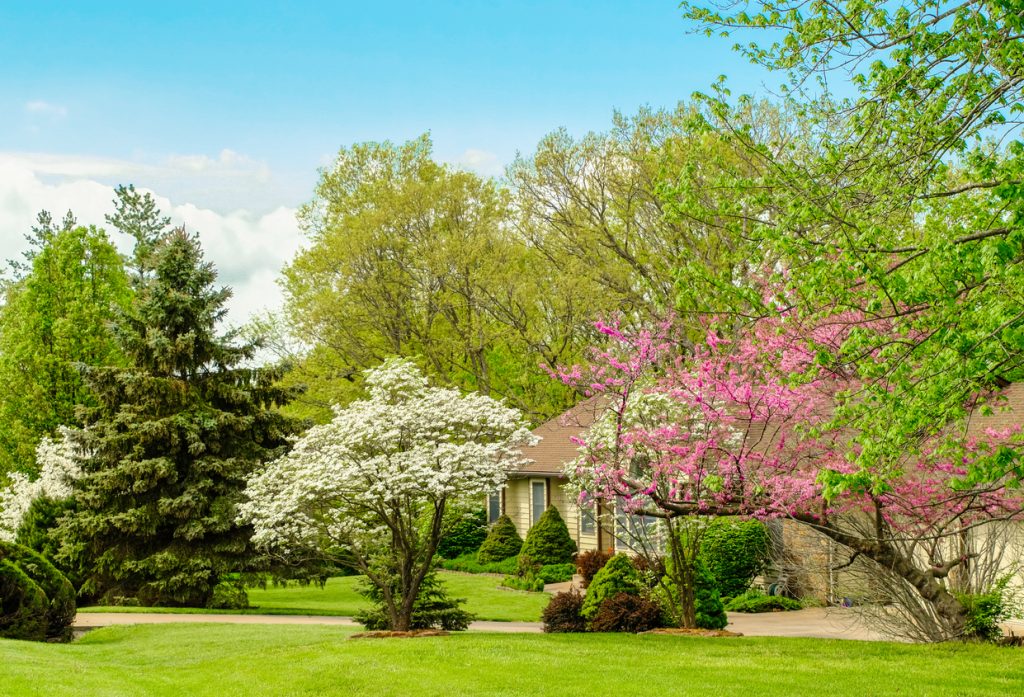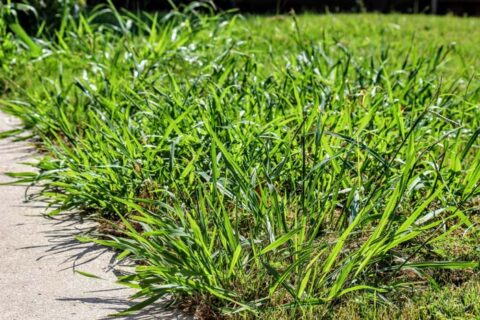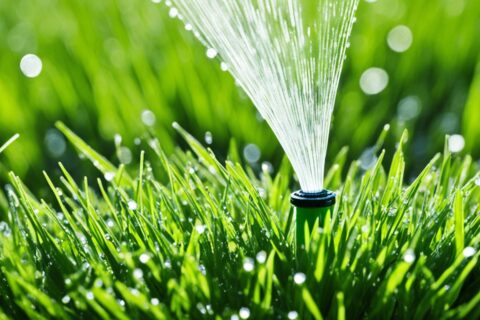5 simple ways to prepare your lawn this spring

Spring is a vital time for your lawn. It’s beginning to emerge from its winter slumber, and it’ll be looking to you for proper care.
While lawn care really is a year-long activity, early spring is a good time to revisit your strategy and learn about what to do and what not to do. Making the right decisions now can make or break how your lawn looks all year.
1. Crabgrass is lurking: How to control it
Take a quick look at your lawn. Do you see bare spots? How about thin areas? This is cause for concern. Crabgrass loves weak areas of lawns where it can easily fill in and take over. Once established, this weed is difficult—and often expensive—to eradicate, let alone manage.
Crabgrass is an annual weed that easily outcompetes cool-season grasses. Crabgrass seeds begin to germinate when soil temperatures reach 55 degrees or above for roughly five consecutive days.
Why is crabgrass so difficult to manage?
- It’s a hardy weed that knows how to survive.
- A single crabgrass plant can grow upwards of 700 tillers and produce 200,000 seeds during its lifecycle.
- It can grow in almost any turf and landscape environment.
- It thrives in dry, sunny, hot climates when cool-season grasses go dormant.
- It can survive low mowing (under 2 inches). Cool-season grasses should be mowed between 3.5 and 4 inches year-round.
- It can withstand tremendous stress caused by foot traffic or machinery. Most cool-season grasses are much less likely to recover.
Managing crabgrass takes a multi-effort approach that often involves pre- and, if able, post-emergent herbicides, as well as adhering to cultural best practices. The best long-term solution to significantly reducing growth is to work on thickening the lawn with a seasonal-long lawn care strategy. The thicker the lawn, the better it’ll do at suppressing crabgrass emergence and establishment. Other factors that can help suppress weeds include proper watering and mowing.
2. Adjust watering–even in the spring
Should you start watering in May? Or can you water in March? How much water should you apply and for how long? Should you ever water at night?
The answers to these questions can help you protect your lawn from damage, prevent unnecessary weed growth, and help it grow into a beautiful, lush green carpet.
- What time of year to water: Obviously we’re not going to water in the winter. So let’s fast forward to the spring. Watch the weather. If we’ve had a dry winter and early spring, there’s no harm in turning on your sprinkler system. Lawns can quickly dry out, especially if New England is hit a by a drought early in the year. Once the top few inches of soil dry out, it’s difficult to impossible to apply enough water for your turf to spring back and green up.
- How much water to apply: This will largely depend on your lawn and the setup of your sprinkler system.
- What time of day to water: The best time to start watering your lawn is early morning. You should almost never water at night because it can promote disease. This, in turn, can stress and kill turf. The one caveat is if your lawn is truly struggling because of the heat, humidity, and high UVs. “Cooling off” your turf by watering a bit later in the afternoon/evening may be OK if it’s done sporadically and correctly.
3. Power rake your lawn–don’t dethatch
Power raking and dethatching are two completely different processes; although sometimes they’re used interchangeably. To dethatch your lawn, you’ll need a machine called a veritcutter. This machine features strong medal blades in the front that can often remove accumulated thatch up to 1/2 inches. You’ll stand behind the machine, like you do a lawn mower and push it. You should only dethatch your lawn in the fall.
Power raking, on the other hand, is a much gentler process on your turf and involves placing tines on the back or front of a ride-on mower. This can, and often should, be done in the spring.
4. Apply the proper nutrients
For turf to grow deep roots and strong blades, it’s critical to provide it with the proper amount and type of nutrients. Fortunately, many of the 18 required nutrients are already readily present in most soil. (The exception is unusual soil types, such as ones that are very sandy, acidic, or alkaline.) As a result, we only have to worry about providing already-established lawns with the required amount of two macronutrients (nitrogen and potassium), which are typically not present in the soil in large enough quantities.
If you’re growing a new lawn, we do recommend applying fertilizer that contains phosphorus because it stimulates early root growth—something that’s just as (if not more important) than blade development at this stage in the turf’s life. However, Massachusetts regulates how and when phosphorus is used, so it’s important to follow proper protocols.
But there’s more! While it’s important to consider the amount of fertilizer used, we must also consider the type of product and when it’s applied.
5. Plan ahead, adjust accordingly
There’s no set-it and forget-it lawn care plan. It’s important to come up with a season-long plan, stick with it, but adjust it as needed. Here are some tips:
- Write it down: List the different ways you currently take care of your lawn and landscape. Note how high you mow the lawn and the frequency. Jot down how often you water your turf and the amount you apply. And note the frequency and timing of fertilizer applications, to name a few.
- Be OK with change: Accept that your plan is really more like an outline. Almost always, how you treat your lawn in the spring differs from how you treat it in the summer, fall, and winter.
- Think ahead: Do areas of your lawn need repair? Didn’t get to it last fall? Get on your landscaper’s schedule now for fall work. This may help ensure your project gets done sooner rather than later when the time comes.
In a previous blog, we described how to review (and overhaul, if needed) your current lawn care strategy. Here are highlights:
We service parts of Norfolk and Bristol County, Massachusetts. Towns include Foxborough, Mansfield, Wrentham, Walpole, Plainville, Franklin, Stoughton, Sharon, Canton, North Attleboro, Attleboro, Norfolk, Easton, Norton. Learn more about each of the services we provide.
Your trusted lawn care provider and lawn pest exterminator
We Service Areas of Norfolk and Bristol County, Massachusetts Including, Foxborough, Mansfield, Wrentham, Walpole, Plainville, Franklin, Norfolk, Sharon, North Attleborough, and Parts of Attleboro, Stoughton, Canton, Norwood, Norton and Medfield. Learn more about our Complete Lawn Care program.


